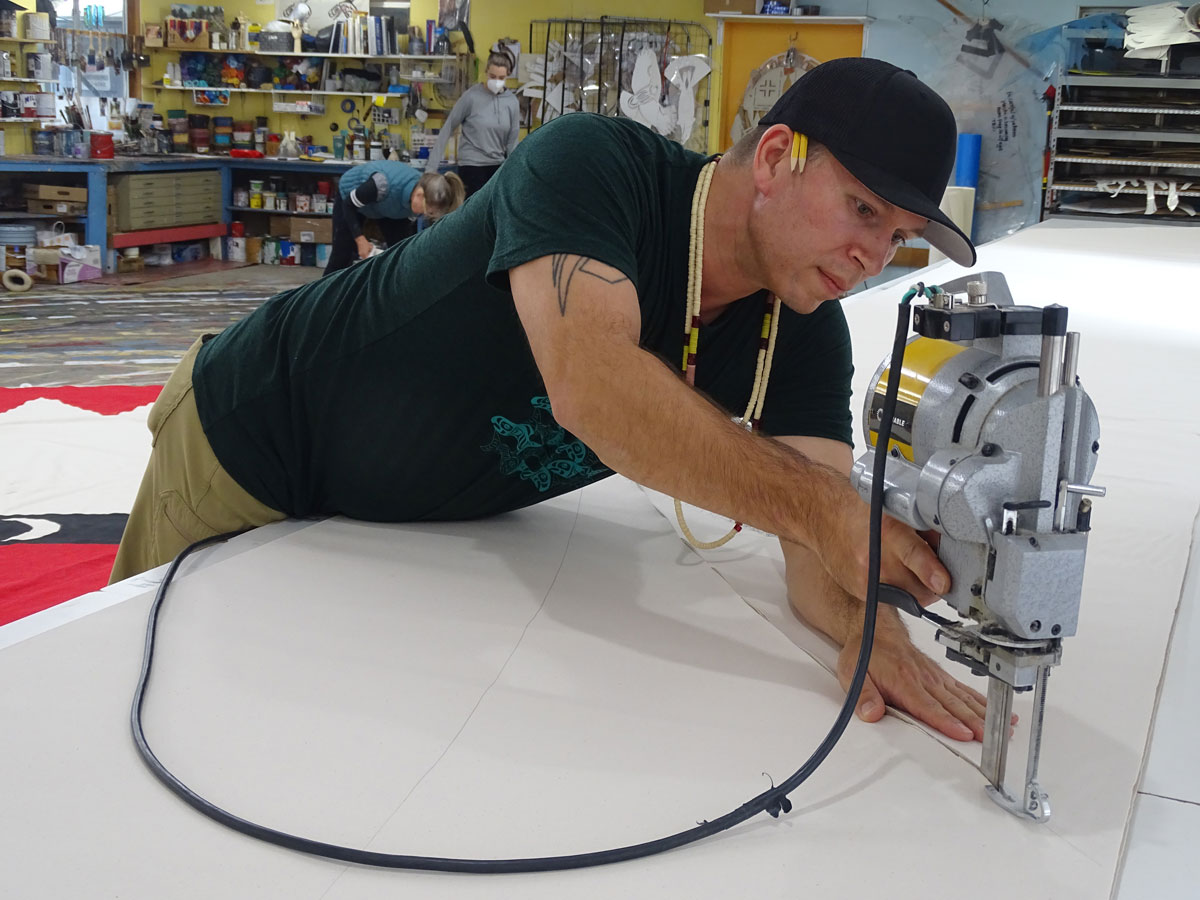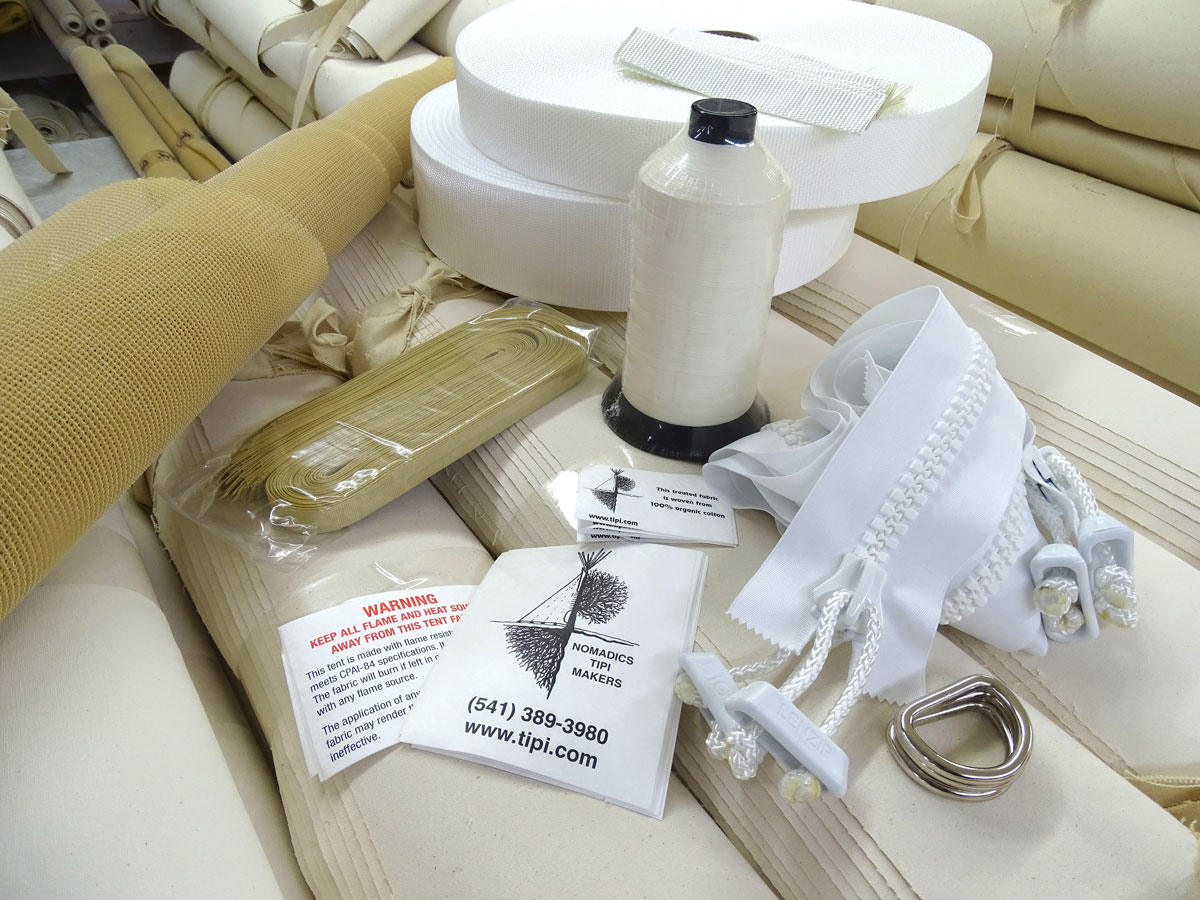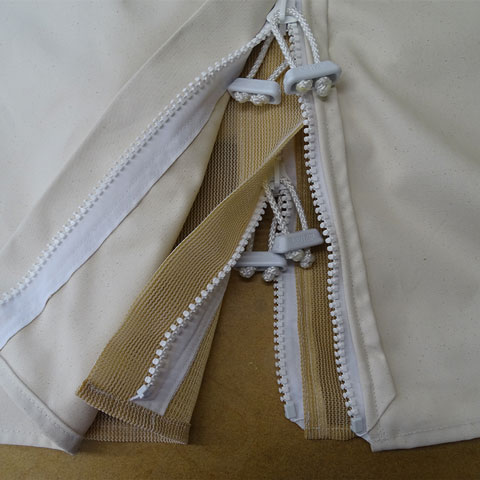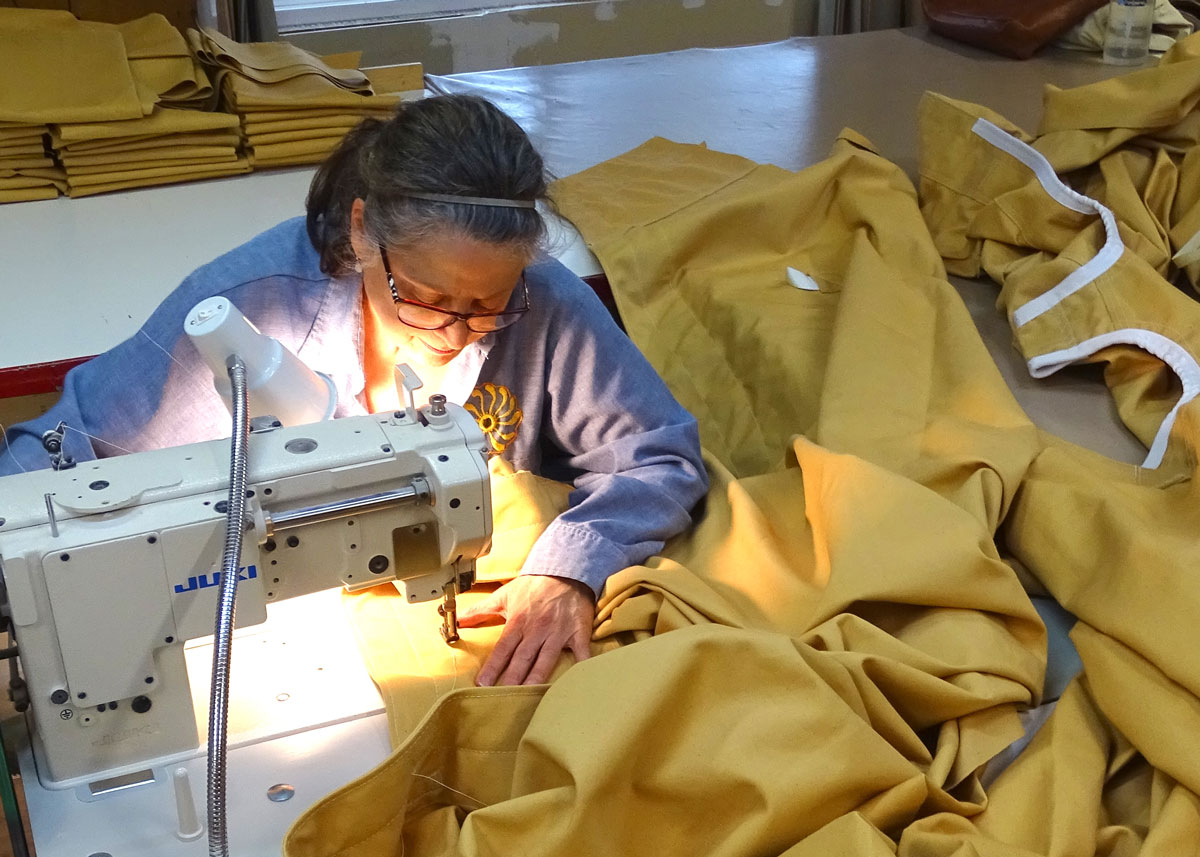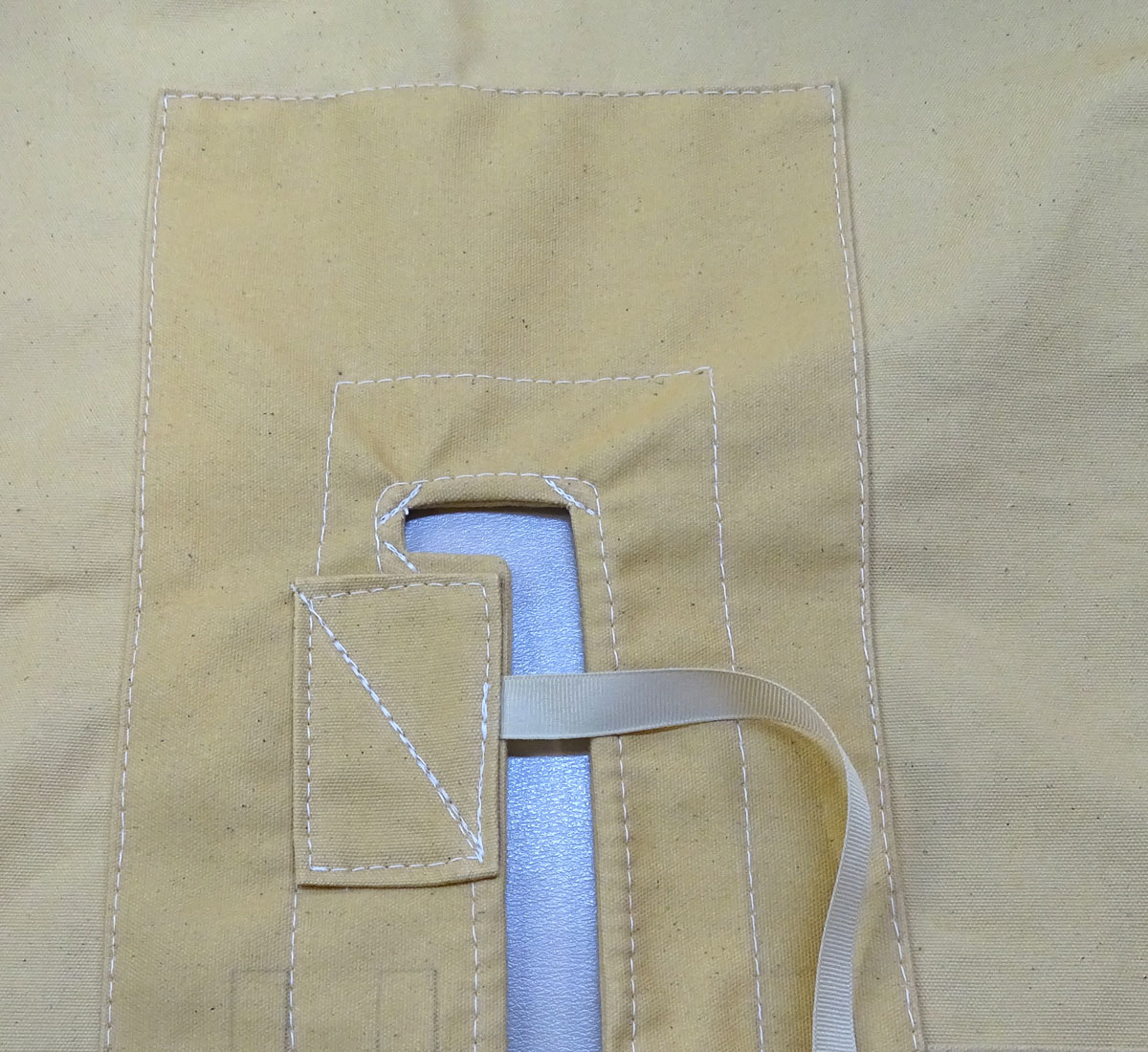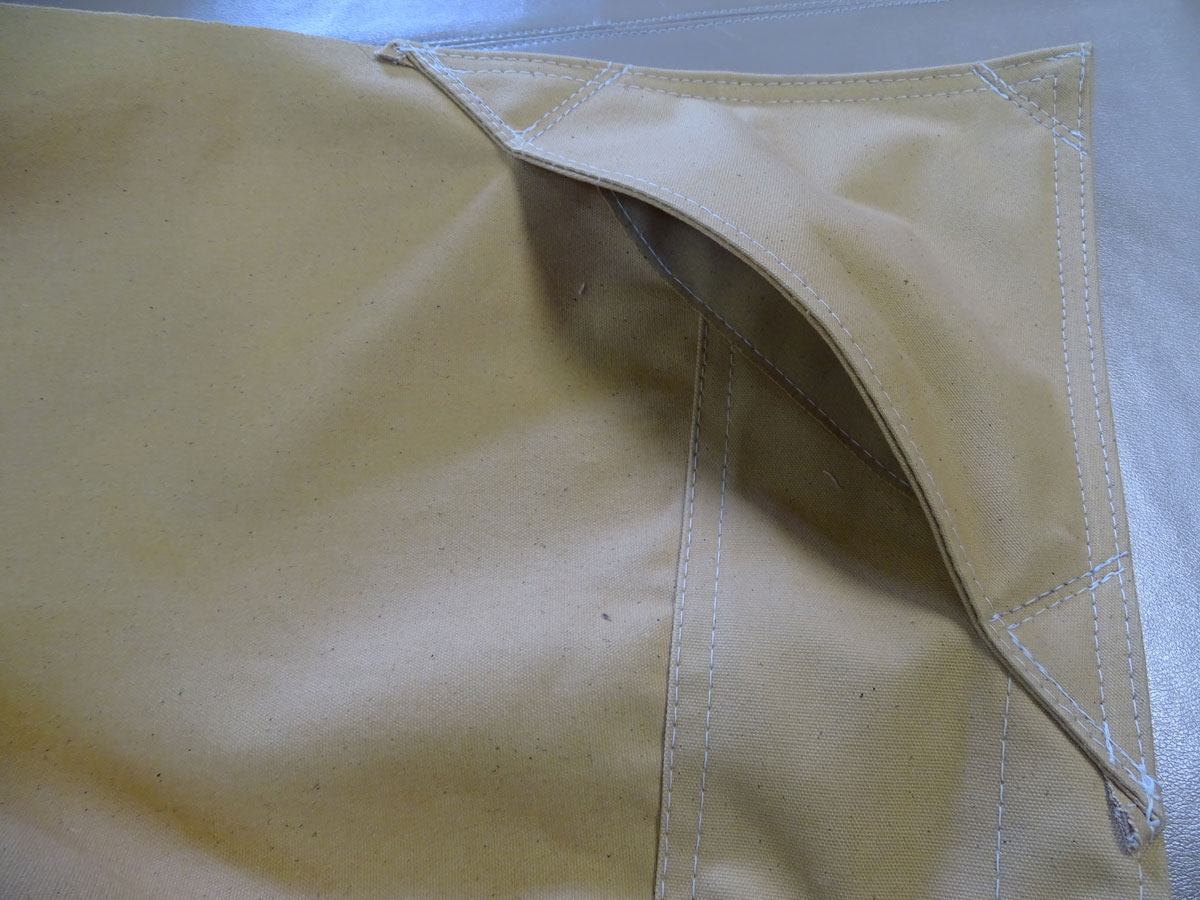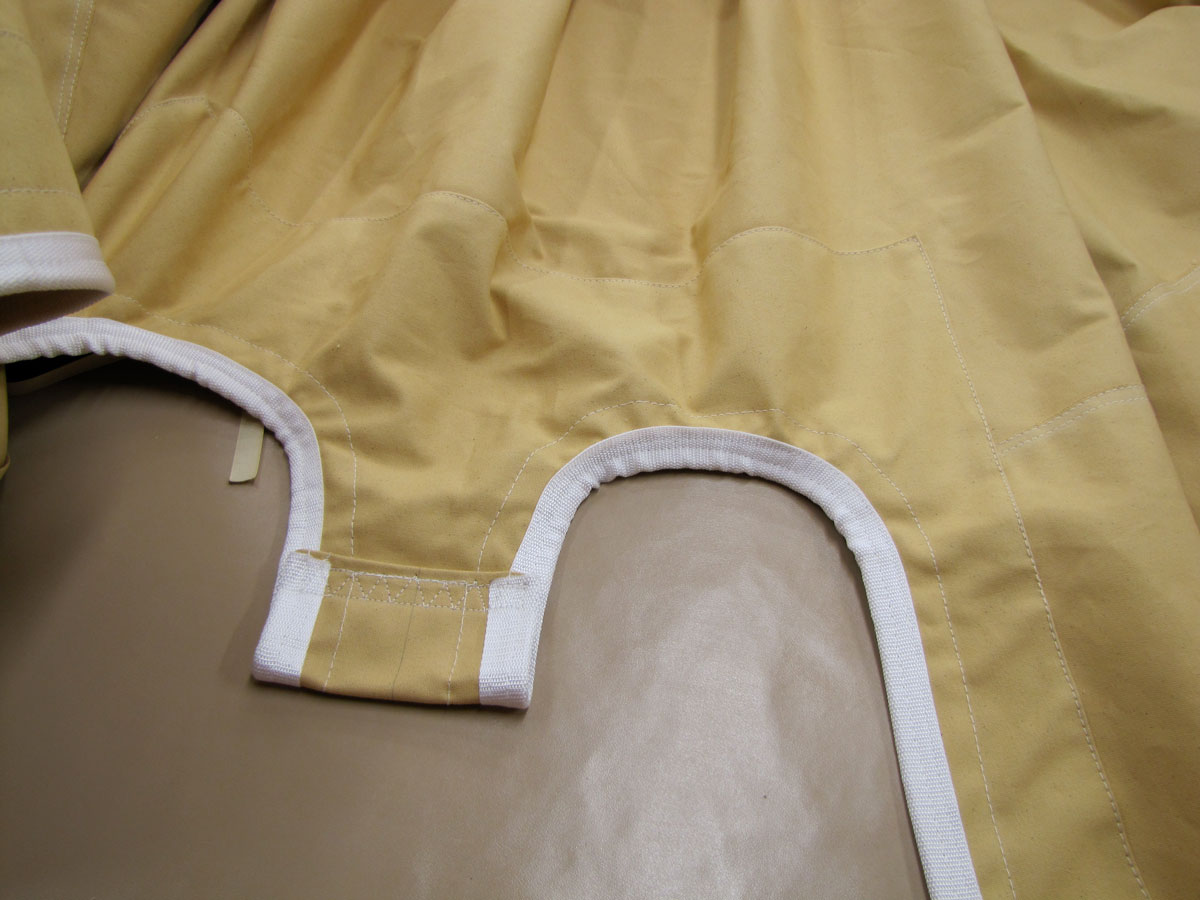OUR CRAFTSMANSHIP

All our tipis are entirely made in the USA, in Bend, Oregon. The fabric is rolled out and cut by hand in our workshop. After cutting, the bundles of fabric are picked up by local seamstresses who do the sewing in their own dedicated work spaces. Once they bring back the finished covers and liners, we paint them in our workshop.
THREAD AND REINFORCEMENTS
For all our covers, doors and rain caps we use #92 industrial Dacron/Polyester outdoor thread. This thread is UV resistant and has anti-wick properties which reject water molecules, so the seams will not leak. All our reinforcing is facilitated by adding additional layers of canvas and 2” or 3” webbing to all areas of high abrasion and stress. The areas that we reinforce most heavily are the bottom edge of the tipi cover, all peg loops, the pinning face with the button holes, the transition to the smoke flaps (the “L”), the smoke flap pockets and the lift pole flap area (the “W”).
rain channels, mesh, and zippers
The Campground Cover has a larger door opening and velcro on both sides for the attachment of the Zipper Door. We attach a rain channel above these 3” wide white velcro strips along both sides of the door. The rain channels help reduce the amount of rain that would normally come through the door opening. It guides the rain along the outside of the velcro strip and let it run into the ground. We also add a rain channel to the zipper door, to the right side of the zipper tape.
For our Zipper Mosquito Screen Door we are using two 15 gauge custom manufactured marine grade zippers with a sturdy zipper handle. The inner screen door is made out of tightly woven tan colored polyester netting and can be rolled back and tied off with ribbon ties. The outer canvas door is made of the same material as your tipi cover.
For our Zipper Mosquito Screen Door we are using two 15 gauge custom manufactured marine grade zippers with a sturdy zipper handle. The inner screen door is made out of tightly woven tan colored polyester netting and can be rolled back and tied off with ribbon ties. The outer canvas door is made of the same material as your tipi cover.


